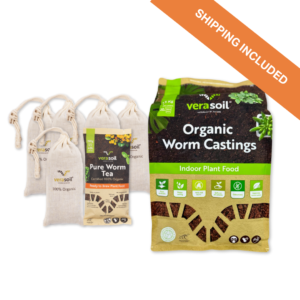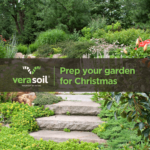

Gary Dal Broi
Agronomist & Production Innovation /
Managing Director
7 Signs It’s Time to Repot Your Plant


Gary Dal Broi
Agronomist & Production Innovation /
Managing Director
7 Signs It’s Time to Repot Your Plant
If you’ve ever owned a plant, you know that when it grows, it needs to be repotted – and there’s no way of getting around that. Without repotting, the plant will wilt and die. Now, repotting a plant can be a little tricky, simply because it can be hard to know exactly when. So, we’ve compiled a few signs to help you know exactly when to repot your plant:
1. Lots Of Roots, WILD Roots
If your plant has roots growing out of the drainage holes or out the top – it’s not a good sign. The exception to this is plants like rabbit foot fern or orchids, which are meant to have aerial roots.
Overgrown roots can lead to lots of issues, but it doesn’t have to be the be-all, end-all. Just go up a pot size, and all your troubles go away.
2. Wilting
There are a few reasons why your plant may be wilting. This includes over-watering, under-watering, sitting in wet soil for too long, or not enough sun-exposure. If none of these reasons match why your plant is wilting, then you should try repotting in new soil.

3. Slowed Growth
If plants are overwhelmed in their current pot, any type of growth will usually be stunted, and pretty quickly too. If you’re a plant parent that measures their plant’s growth with pencil marks, like parents do for their kids, that’s okay. It’s good to know, particularly when you see your plant’s growth slowing – or stopping.
If you’re not one of those plant parents, that’s also okay. But, you should at least be familiar with it’s typical growth pattern. For example, if a plant normally produces a few new leaves a week, but then that number of leaves drops to one or none, we would consider repotting it.

4. Yellowing Leaves
Yellowing leaves could be the result of a few things, including too much or too little water, too much sun exposure, or the plant needs the appropriate size pot. AND…this does not necessarily mean that the plant needs to be put into a larger pot – sometimes the plant is overwhelmed because it needs to go down a size.
If you repot a plant into a bigger pot, and the leaves are still yellowing, then perhaps the pot is too large.
5. Top Heavy
Some plants can grow quite large – with some being heavy enough to tip over the pot – if the plant is too top heavy. If this is the case, it’s time to repot your plant in a WIDER pot.
6. Soil Dries Too Fast
If you feel as though you have to water your plant more frequently, but the soil is drying out quickly, it may be another sign that you need to repot your plant.
It may also be a sign that the soil that your plant is in isn’t providing enough nutrients for it to flourish. When you decide to repot that plant, it is a good idea to mix a handful of Verasoil into the plant’s soil, to boost its nutrients and help it live it’s best life.
7. Haven't Repotted In At Least A Year
On average, plants should be repotted every 12 – 18 months, but this purely depends on the plant’s growth patterns. When you look to repot, this should be done in the spring and summer months (but early on, before your plant starts to grow rapidly).




So there you have it! Our 7 signs that it’s time to repot your plant. Now, we know that this process can seem a little arduous at times, but it doesn’t have to be. You can help mitigate many of these symptoms by simply adding a handful of Verasoil to your plants soil. The handful of worm castings will allow your plant to grow more, retain water and provide all the microbes and nutrients necessary.
Are you ready to begin your plant journey? Click here to find a Verasoil stocked Bunnings, and don’t forget to tag us in any posts on your social media!
Facebook: @verasoil
Instagram: @verasoil_australia
TikTok: @verasoil






